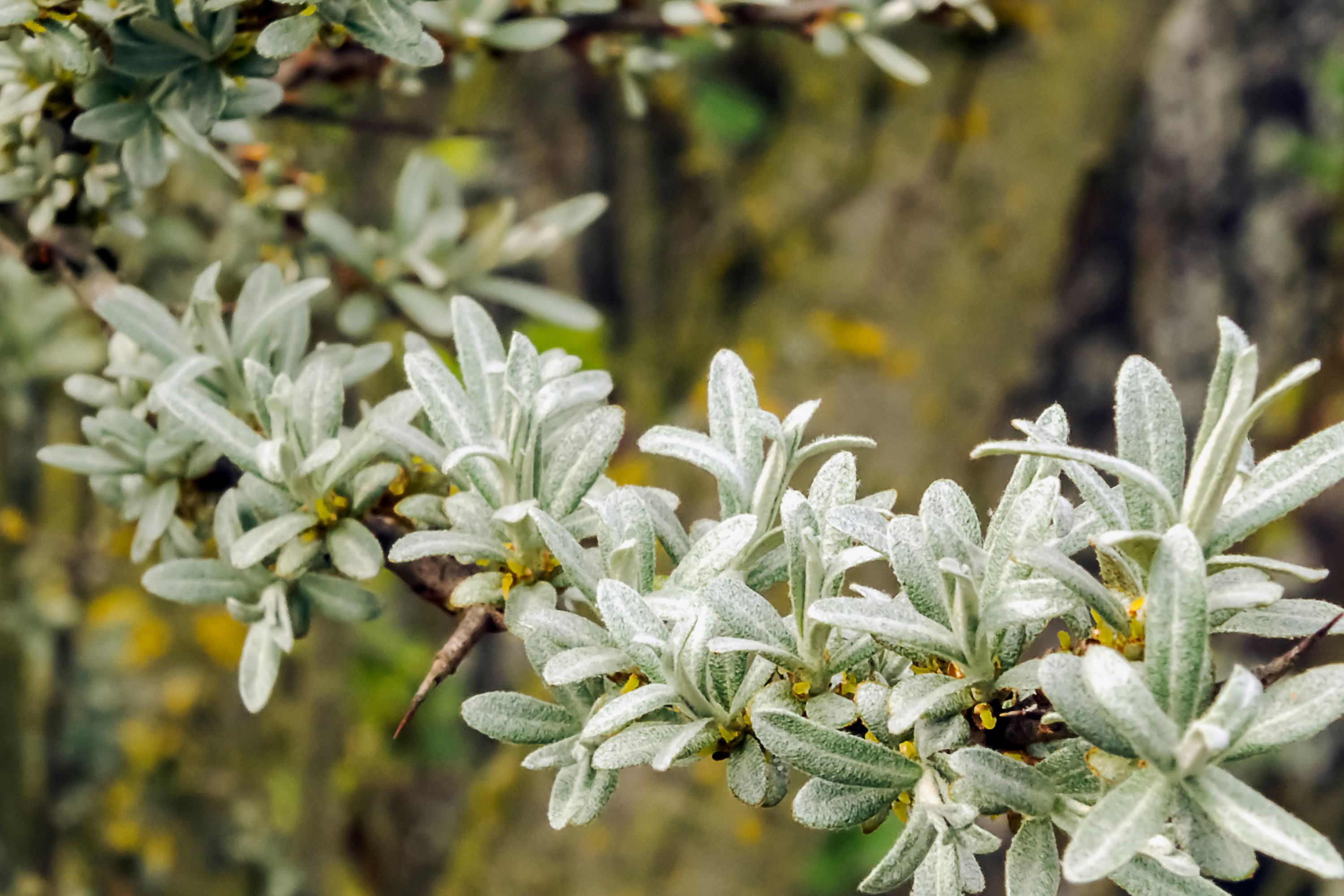Seaberry
(Hippophae rhamnoides)

Description
Hippophae rhamnoides, also known as sea-buckthorn,: 277 is a species of flowering plant in the family Elaeagnaceae, native to the cold-temperate regions of Europe and Asia. It is a spiny deciduous shrub. The plant is used in the food and cosmetics industries, in traditional medicine, as animal fodder, in horticulture, and for ecological purposes. Hippophae rhamnoides is a hardy, deciduous or evergreen shrub that can grow between 2 and 4 m high (between 7 and 13 ft).It has a rough, brown or black bark and a thick, grayish-green crown. The leaves are alternate, narrow and lanceolate, with silvery-green upper faces. It is dioecious, meaning that the male and female flowers grow on different shrubs. The sex of seedlings can only be determined at the first flowering, which mostly occurs after three years. The male inflorescence is built up of four to six apetalous flowers, while the female inflorescence normally consists of only one apetalous flower and contains one ovary and one ovule. Fertilization occurs solely via wind pollination, so male plants need to be close to female plants to allow for fertilization and fruit production. The oval or lightly roundish fruits grow in compact grapes varying from pale yellow to dark orange. Individual fruits weigh between 270 and 480 mg and contain high amounts of vitamin C, vitamin E, carotenoids, flavonoids and health-beneficial fatty acids, as well as higher amounts of vitamin B12 than other fruits. The plants have a very developed and extensive root system, and the roots live in symbiosis with nitrogen-fixing Frankia bacteria. The roots also transform insoluble organic and mineral matters from the soil into more soluble states. Vegetative reproduction of the plants occurs rapidly via root suckers. Hippophae rhamnoides is situated in the family Elaeagnaceae, in the order Rosales. Hippophae rhamnoides is divided into eight subspecies: ssp. carpatica, caucasia, fluviatilis, mongolica, rhamnoides, sinensis, turkestanica and yunnanensis. These subspecies vary in size, shape, number of main lateral veins in the leaves and quantity and color of stellate hairs. They also have different areas of distribution and specific uses. The genus name Hippophae originates from the Greek words hippo = "horse" and phaos = "to shine" and is due to the ancient Greek use of sea buckthorn leaves as horse fodder to make their coats shine more. The species name rhamnoides means "resembling the Rhamnus", referring to the buckthorn plant.
Taxonomic tree:







